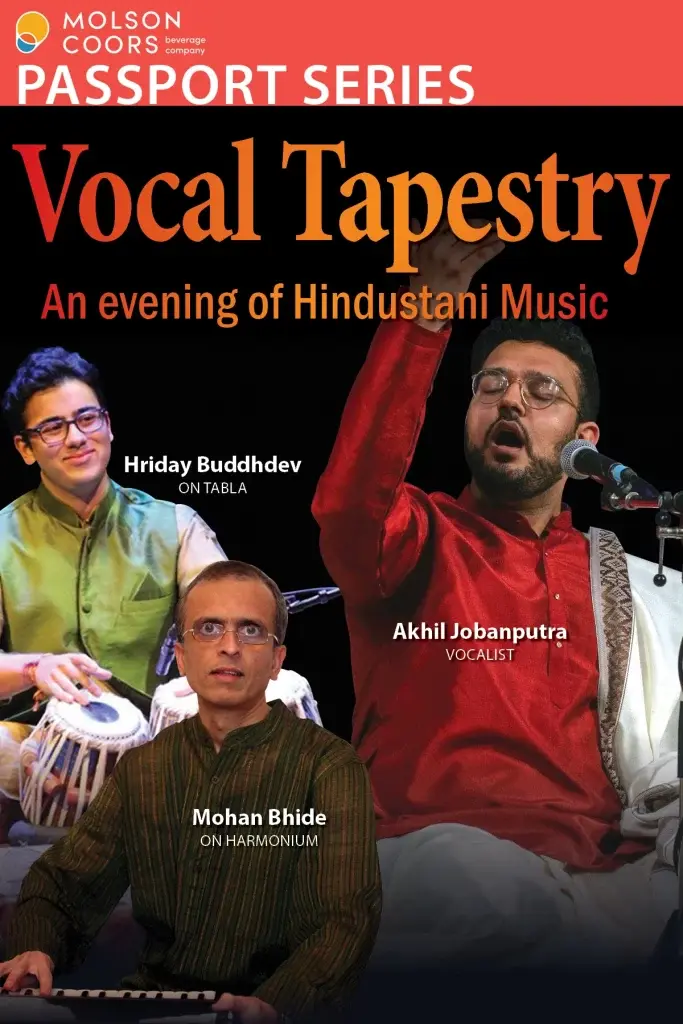Program Guide | TD Music Connected Play the Parks
- Akhil Jobanputra

- Aug 26, 2022
- 2 min read
What's Hindustani music?
Hindustani music is one of two major forms of classical or art music found in India today, typically finding its representation across the North of India as well as Pakistan and Bangladesh, with the other major form Carnatic music being represented across the South and Sri Lanka. Khayal is one of the primary subgenres of Hindustani vocal music, which is what will be presented today. It represents a confluence of older musical traditions such as Prabandha, Dhrupada, and Qawwali. It developed an identity of its own in the royal courts of India, beginning with the Delhi Sultanate, and culminating at the courts of the Gaekwad kings of Baroda. It is primarily an improvised form, with the song-text providing a basis for spontaneous musical creation within the grammar of the raga (melodic form) and tala (rhythmic cycle). In modern times, Khayal has continued to evolve as one of the many living Indian performing art traditions practiced today.
What will be presented today?
Raga Hamsakinkini
Hamsakinkini is a very old but nowadays a rarely heard Raga (melodic form). Its name can be broken down into two parts - hamsa (swan) and kinkini (small tinkling ornament). The name, essentially meaning "swan-like ornament", alludes to the playfulness and charm that this Raga holds. In Indian symbolism the swan can represent love or spiritual essence, with sometimes both representations being tied together. Hamsakinkini is a very groovy Raga, employing both a natural and flattened third note (Ga) and a natural and flattened seventh note (Ni), which makes for some tricky passages. Each Raga has their own musical grammar, which means that the sargam (musical notes) present in the Raga have specific sequences, inter-relations through vocal ornamentations like meends (slides), and harmonic intervals. Both compositions presented today are known as lakshangits aka songs that describe musicological features of the Raga they are composed in. The first is a traditional composition using outdated terminology, and the second (composed by my guru Pt. Arun Dravid) uses currently prevalent musicological references. Although textually they may not be relatable to you, Hindustani music is a sound journey. The focus remains more on the cadences of emotions delivered through the improvisation of melody and rhythm rather than the lyrics.
Song-Text #1: Naye Naye Suraga Sakhi | Vilambit Jhaptala (slow-paced 10-beat rhythmic cycle)
Meaning: O Friend! I am feeling new, unexplored emotions. The wise folk say the following.
As you move up the scale known as Hindola, you encounter twenty-one possibilities of key shifts/modulations. It is known that there are seven notes (Sa Re Ga Ma Pa Dha Ni) and three scales (Shadja Grama, Madhyama Grama, and Gandhara Grama).
Song-Text #2: Milata Sura Tala Tana | Drut Ektala (fast-paced 12-beat rhythmic cycle)
Meaning: Sound, rhythm, and fast note passages come together in the Raga known as Hamsakinkini. Embellish it! Sing it! Play it!
There are two versions (flat and natural) of the note Ga, and also two (flat and natural) of the note Ni. Sing these with vigour! This sweet-sounding scale has five notes going up, and all seven notes coming down.




Carnatic music classes from Go4Guru - We provide 1 on 1 online carnatic music classes for beginners taken by experienced tutors. Enroll today at Go4gGuru and learn carnatic music lessons from the best gurus in music industry.
https://www.onlinecarnaticmusic.com/
nice music website. We also provide indian classical music kindly see our website https://www.onlinehindustanimusic.com/